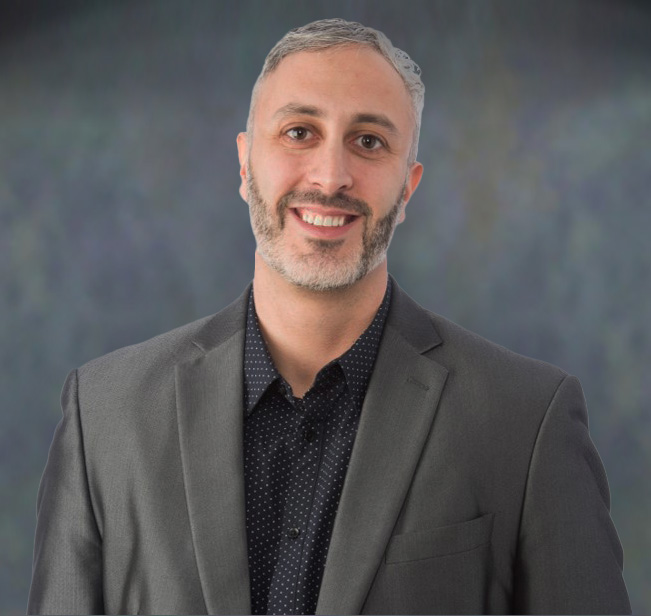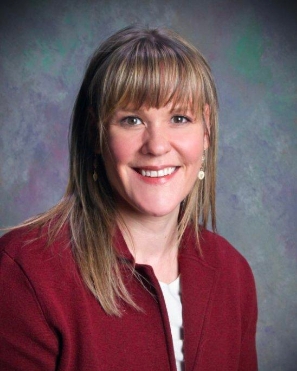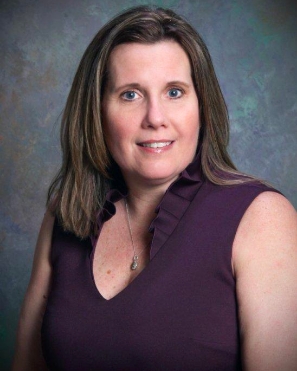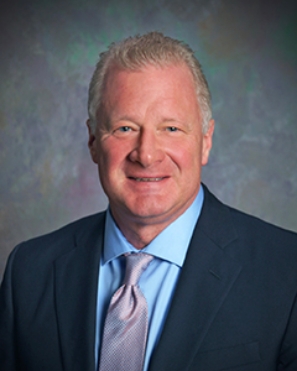When COVID-19 suddenly took the world stage, the nonprofit industry — along with the rest of the world – was impacted profoundly. It was our generation’s Pearl Harbor, our 9/11. But this time it was different, because every citizen of the United States — the world for that matter — was impacted. Everyone knew the world had changed in an instant, but no one was sure of what was to come.
In the nonprofit universe, in-person events were abruptly cancelled, and face-to-face fundraising paused indefinitely. Call centers emptied and their agents (as well as most Americans) made a sudden and rocky transition to working from home. It was a transformational moment in history, unlike anything we had ever witnessed.
Nonprofits Scramble to Respond
Nonprofits were confronted with a big decision…how should they approach donors in this moment of monumental change? Was it even appropriate to solicit funds? Would it work? Synergy and our clients decided together that the best path forward was to reach out to donors and check in on them. Give them the opportunity to tell us how they were doing and what they needed before asking for support.
Synergy supported several phone-based media channels, which offered what seemed to be the quickest and most efficient way to engage with donors, who were largely confined to their homes.
Donor Conference Calls – “Checking In”
A Donor Conference Call allows a nonprofit to engage hundreds or even thousands of donors with its CEO simultaneously. It supports immediate feedback from donors through a Donor Survey function as well as live “Q&A” sessions sprinkled throughout the call. A Donor Conference Call can be organized and implemented in a matter of just several days, and it is relatively inexpensive, with a cost of $2.00-$5.00 per participant for a 30-minute Conference Call.
For these reasons, we proposed conference calls to our clients as the quickest and most cost-efficient channel to “check-in” with the most donors. We produced over a dozen Donor Conference Calls over a period of several weeks.
Somewhat to our surprise (but perhaps it shouldn’t have been), we found most people responded that they were OK! A large number indicated that they were more concerned about how others were doing. They were appreciative that the organization had reached out to them. But they wanted to know what they could do to help others!
During one such Donor Conference Call (on behalf of a nonprofit that delivers local humanitarian aid):
- Synergy dialed out to over 60,000 “high value” supporters, inviting them into the call.
- Over 5,400 attendees joined, with 1,100 of them remaining engaged for the entire 35-minute program.
- Although the intent of the call was to “check in” on the donors, many asked during the live Q&A session, “What can I do to help?”
- The speaker directed them to the website. Over $11,000 in donations were received through the website that evening and two high-value estate gifts were secured the following day.
After hearing many donors on the Conference Calls say, “We are OK! What can we do to help?” we advised our clients to move forward with their fundraising appeals, boldly and unapologetically.
The Power of Texting Reveals Itself
Although Digital Fundraising had been trending sharply for several years, Text Messaging as a Fundraising tool was still in its infancy when COVID hit. Synergy began testing Cultivation Messages through our “Peer-to-Peer” Texting platform once the COVID-19 lockdown began.
We started by testing simple messages of support, which contained a link to the nonprofit’s website. While there was often no solicitation in the text message itself, the landing page did give the donor the opportunity to donate. We were seeing these Cultivation texts not only generate positive net income, but — in some cases— recipients were electing to become sustaining donors!
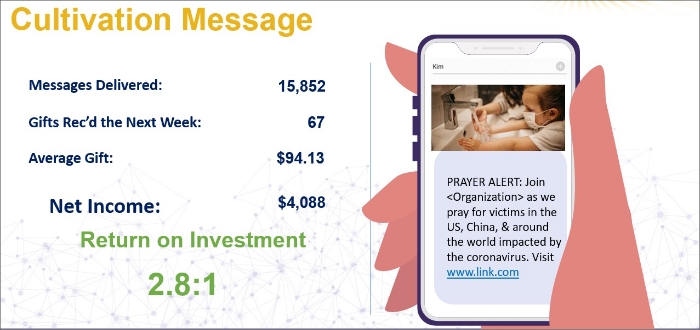
We quickly realized that Peer-to-Peer Texting was the biggest secret weapon in the fundraising arsenal. In retrospect, it stands to reason: by 2020, smartphones had reached over 80% usage by Americans.
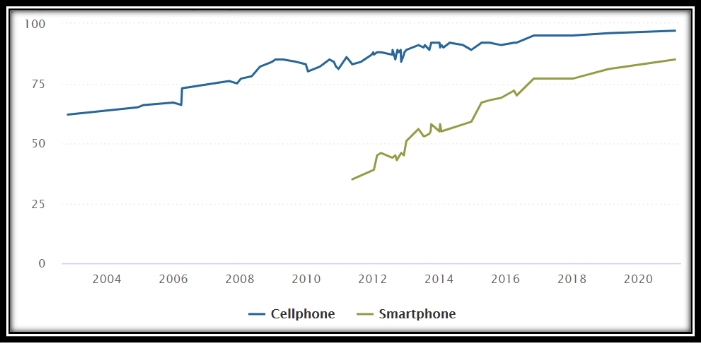
Moreover, it wasn’t just Millennials and Gen X’ers that were driving the growth in smartphone usage. People over the age of 65 represented the fastest growing age group of smartphone users between 2015 and 2020.
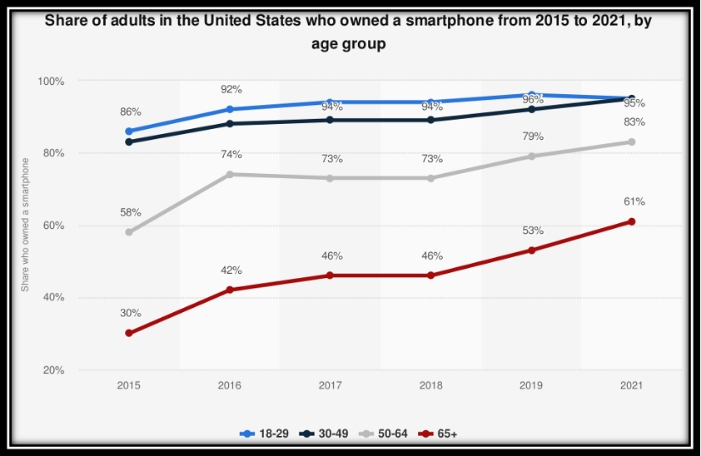
Finally, smartphones have been growing steadily as the vehicle for making online revenue transactions. A high-water mark was set in 2020, with 28% of all online transactions being made on a smartphone.
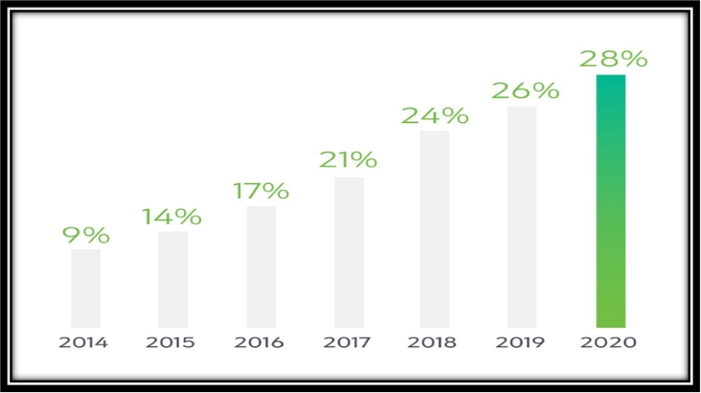
Why is Peer-to-Peer Texting So Effective?
When a typical Mass Text is sent, an automated dialing system delivers it. Sending a Mass Text requires prior consent from the recipient. The recipient cannot respond to the text, and there are strict limitations on copy length and the inclusion of photos/GIF files, or personalization.
Peer-to-Peer texting establishes a “One-to-One” relationship between the sender and the receiver. In other words, a human being manually delivers every text. This means that we may text to donors who haven’t given prior consent to receiving a text. It also allows us to append cell phone numbers to a donor file and send a text to those records. The result is text messages that are delivered to a significantly larger portion of the donor file, creating significantly more response and revenue.
Additionally, if a text recipient responds, it goes back to a human being, who can answer a question or otherwise engage with that donor. Peer-to-Peer texting allows significant personalization, as well as the robust use of photo files.
Text messages are rarely overlooked. In fact, 90% are viewed within three minutes of being received. Texting accomplishes objectives that nonprofits really struggled with. Donors that have stopped responding to other channels will respond to text messages.
Peer-to-Peer Text Messaging Takes Off Like a Rocket!
When a typical Mass Text is sent, an automated dialing system delivers it. Sending a Mass Text requires prior consent from the recipient. The recipient cannot respond to the text, and there are strict limitations on copy length and the inclusion of photos/GIF files, or personalization.
Peer-to-Peer texting establishes a “One-to-One” relationship between the sender and the receiver. In other words, a human being manually delivers every text. This means that we may text to donors who haven’t given prior consent to receiving a text. It also allows us to append cell phone numbers to a donor file and send a text to those records. The result is text messages that are delivered to a significantly larger portion of the donor file, creating significantly more response and revenue.
Additionally, if a text recipient responds, it goes back to a human being, who can answer a question or otherwise engage with that donor. Peer-to-Peer texting allows significant personalization, as well as the robust use of photo files.
Text messages are rarely overlooked. In fact, 90% are viewed within three minutes of being received. Texting accomplishes objectives that nonprofits really struggled with. Donors that have stopped responding to other channels will respond to text messages.

Synergy’s clients quickly adopted texting as a key part of their donor communication/ development strategy. After delivering just 50,000 Peer-to-Peer text messages in 2019 and off to a slow start in 2020, the number grew quickly with the onset of the COVID-19 lockdowns. Synergy delivered more than 6,000,000 messages in 2020 and over 13,000,000 in 2021. That trajectory continued into 2022.
The following is an example of a text message solicitation campaign that was delivered shortly after COVID-19 lockdowns were implemented. It produced nearly $30,000 net income from 29,463 texts and a 7.1:1 Return on Investment!!!
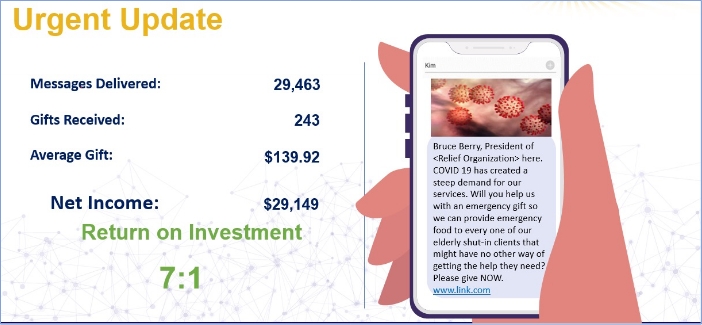
We quickly learned that a text message produces 90% of its response within 24 hours, making it particularly effective as a “Clean-Up Hitter”, deployed when the end of a Matching Gift appeal (or other finite campaign) is approaching. Also, because Peer-to-Peer texts can be produced and deployed very quickly, it is particularly effective at communicating emergency needs.
A relief client contacted us shortly after an earthquake rocked Haiti in the Summer of 2021. Our Account Team was on a flight to Phoenix when the request was received. By the time the team landed, they had already provided the text copy to the client for approval. The file was received shortly thereafter. By late afternoon, we had deployed the text and within 24 hours, it generated $55,540 in net income at a 22:1 return on investment.
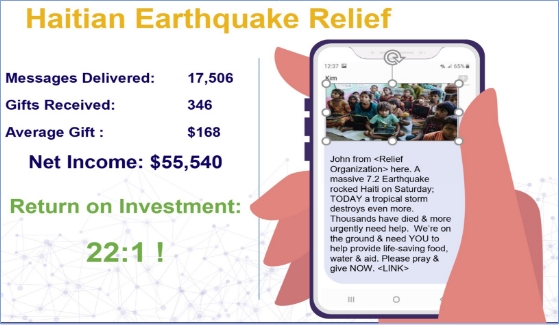
Case Study of an Early Adopter
Since the onset of the pandemic, Synergy has delivered text messages for over 70 clients. One of Synergy’s clients, “The Early Adopter,” provides insight into what a fully integrated, Peer-to-Peer texting program can accomplish. This client began testing text messaging shortly after the pandemic hit. With the initial success, they added campaigns at a gradually accelerating cadence. We began texting audiences that they were no longer contacting in the mail or digitally. We reactivated deep lapsed (100+ month) donors that were no longer responding to direct mail or tele-fundraising.
By the beginning of 2021, we were working very closely to fully integrate texting into every facet of their donor development program. The results provide some insight into what a professionally managed texting program can make for most nonprofits.
For the Early Adopter, we delivered 6.5 million texts in 2021. The texts generated $1,700,000 in gross revenue with a $63 average gift. The net income on the entire program reached $1,000,000 for a return on investment of 2.4:1. This is impressive, considering that a large portion of the texts were cultivation messages rather than solicitation, and half of the messages were delivered to lapsed donors. To that end, the texting program was a terrific success.
Additionally, the texting channel acted as a bridge from their traditional marketing program to their digital effort. Over 21,000 new email addresses were obtained, giving the digital team a significant boost to its email audience.
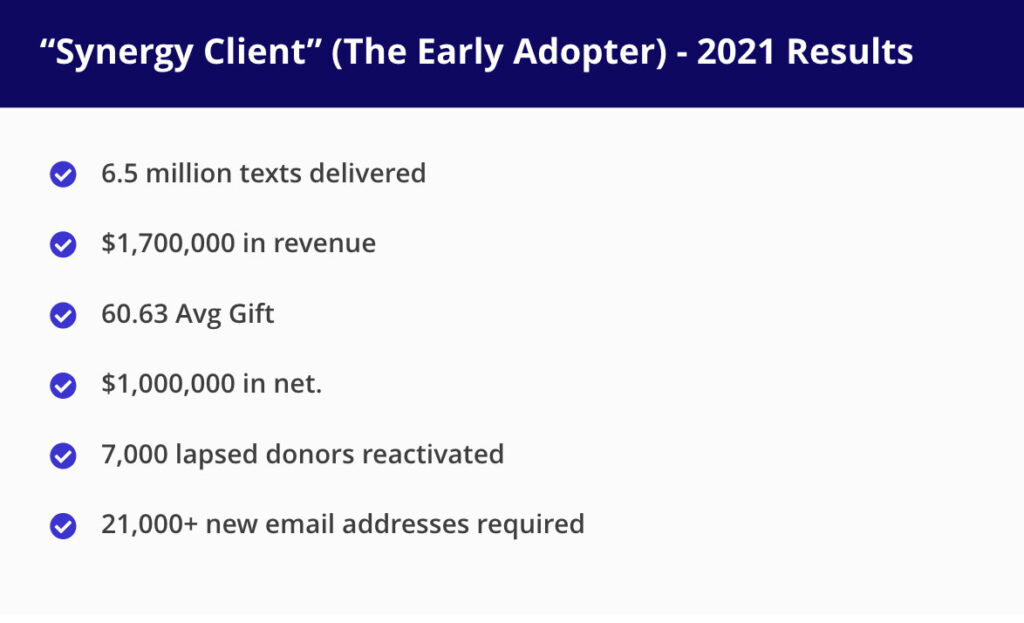
One of our primary concerns was minimizing “Opt-Out” rates. An opt-out option must be added to each text. We were very deliberate in the messaging, the cadence, the mix of solicitation and cultivation messages, and the integration of the texting messages with all other donor communications.
The result has been very encouraging. While opt-out rates to initial texts were over 10%, those quickly dropped to around 2%. The charts below track opt-out rates from April of 2020 through December of 2021. The spikes in opt out rates represent text campaigns where new audiences were added to the mix.
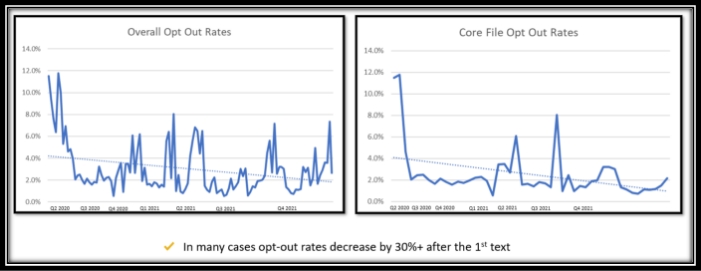
Giving Tuesday
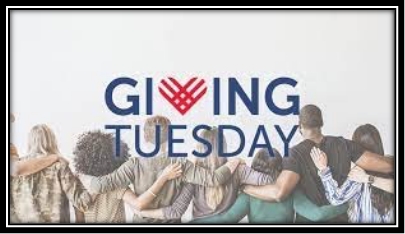
To bring more clarity, 995,000 texts were delivered on behalf of The Early Adopter on Giving Tuesday, generating $298,000 in revenue and $196,000 in net income at a 2.3:1 return on investment.
Isolating the 0-24 month “Active” donors, the program generated $120,000 in net income at a 5.3:1 ROI.
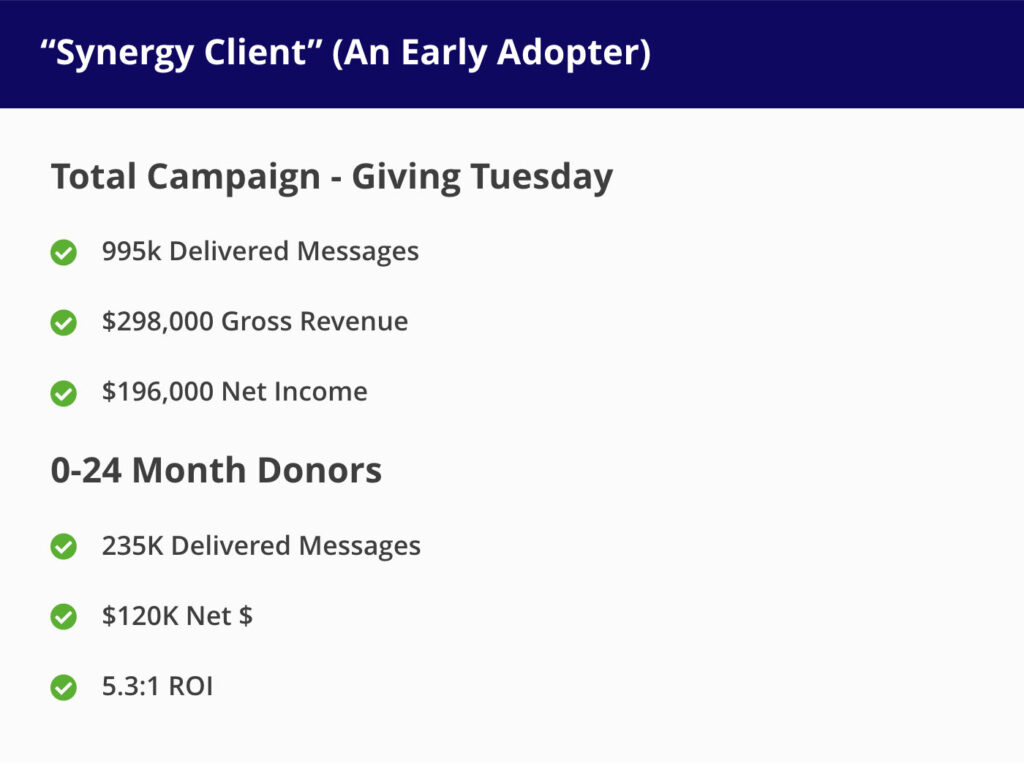
Very impressively, 74.1% of the messages were delivered to lapsed donors, the majority of whom were 109+ months lapsed. These were donors whom the organization could no longer reactivate through direct mail or tele-fundraising. This single text campaign reactivated nearly 1,400 donors at a return on investment of 1.4:1.
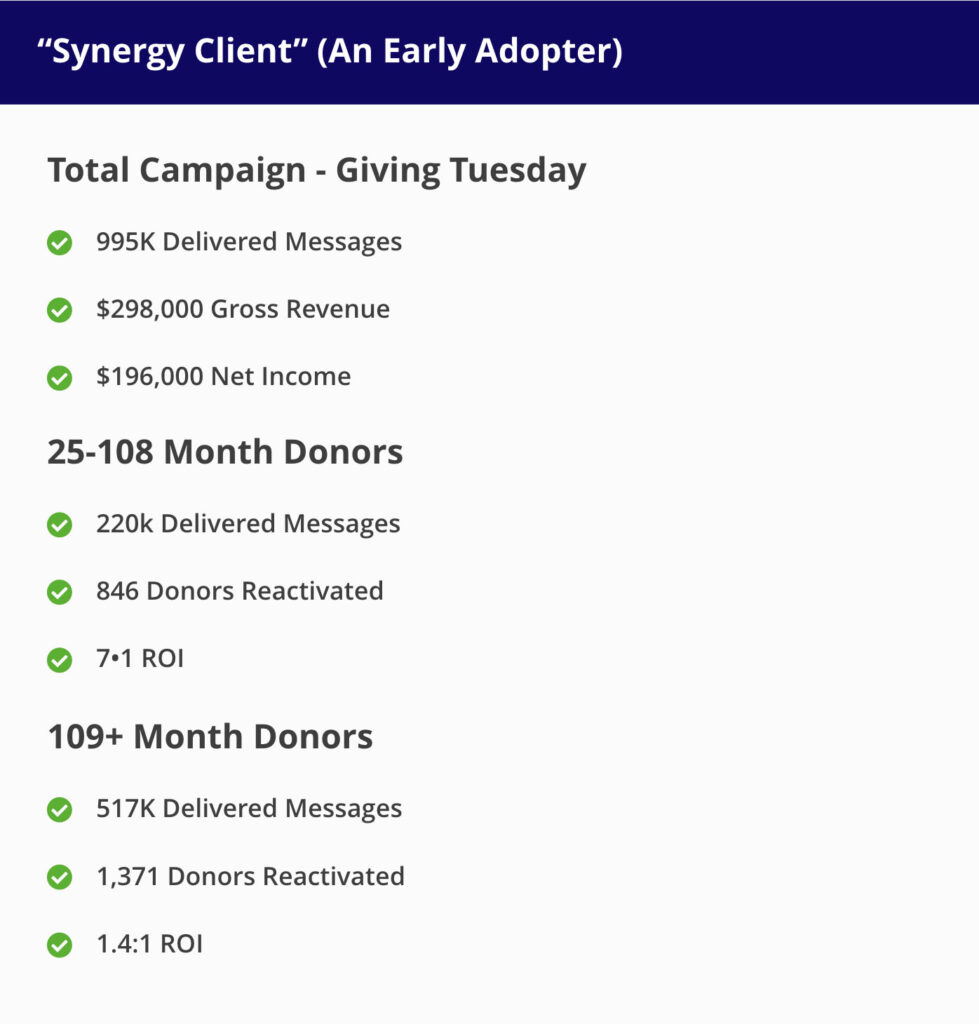
Finally, a test was conducted to 23,000 house file non-donors, which produced 44 new donors at an acquisition cost of $13.50. This is well under the organization’s average cost to acquire a donor.
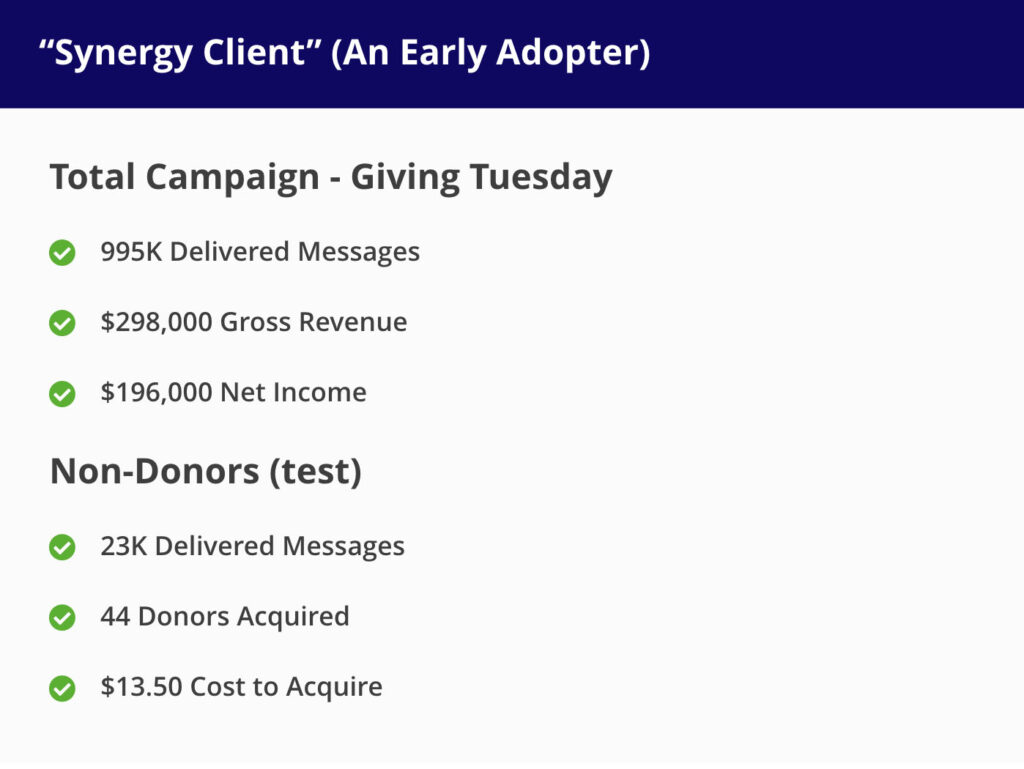
How to Move Forward with Texting
- What are my strategic objectives?
- Who is/are my target audience(s)?
- What is the optimal cadence?
- What’s the right mix of solicitation and cultivation?
- How will texting support my Digital Program and how will it support my Traditional Marketing (Direct Mail)?
- How will I maximize delivery rates?
- What’s my plan to minimize “Opt-Out” rates?
- What is my strategy to optimize messaging?
- How do I optimize my landing pages?
These are questions that must be answered in order to optimize your texting program.
Why Partner with Synergy?
Synergy has served nonprofits exclusively for 20 years. Our expertise is helping our nonprofit partners integrate phone-based marketing solutions into their donor development programs to create synergy. We know how to optimize donor value, retention, and how to create memorable, positive “Experiences” for donors.
With regard to texting specifically:
- We have deployed over 1,000 Peer-to-Peer Text Campaigns
- We have developed a deep base of best practices and continue to do so
- Our delivery platform is Best-in-Class
- We offer extremely competitive sliding scale pricing
- We have 20 years’ experience integrating phone-based donor communication strategies into Nonprofit Marketing programs.
Synergy has been split-tested against numerous competitors, as well as in-house texting solutions. We have a perfect record of outproducing in every case. We would very much appreciate the opportunity to provide a free consultation, understand your needs and show you how we can help you meet your objectives.



